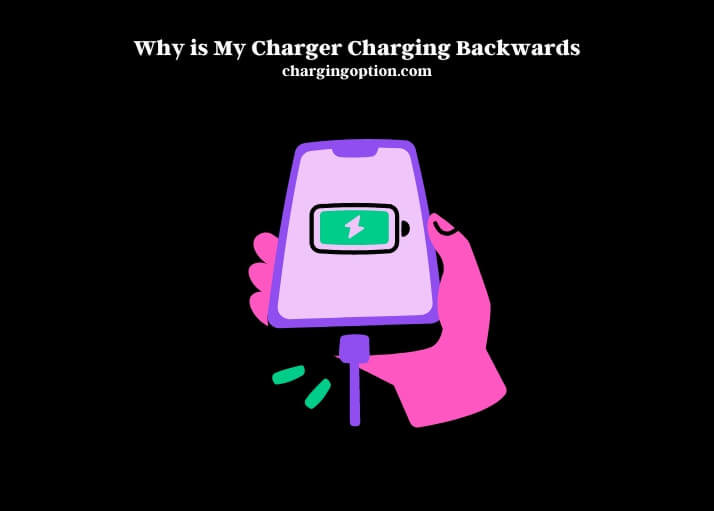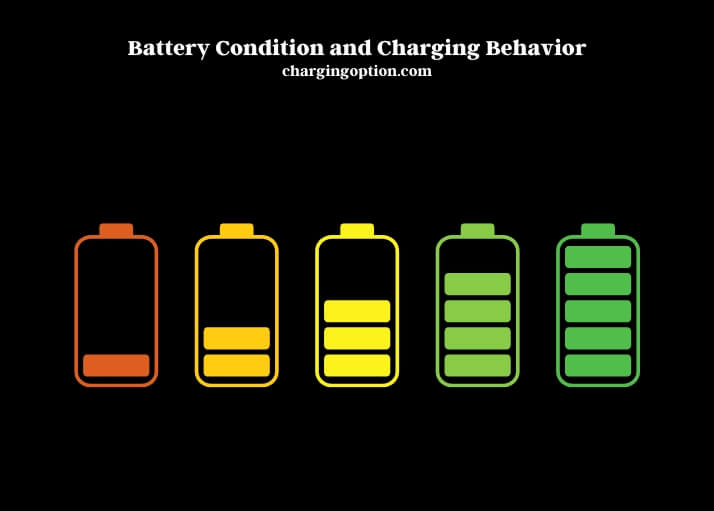Charging your device only to find the battery depleting instead of filling up can be perplexing. This reverse charging phenomenon may stem from several technical issues, including faulty charging equipment or software glitches.
Reverse charging can occur due to a variety of reasons, ranging from the use of damaged cables and chargers to software bugs within the device itself. Faulty or non-standard charging accessories often fail to regulate the power flow correctly, leading to potential reverse charging scenarios.
Extreme environmental conditions such as high temperatures or humidity levels can adversely affect the device’s charging circuitry, causing it to malfunction. On the software front, updates to the device’s operating system or the firmware of the charging hardware can introduce bugs that disrupt normal charging operations. These software glitches might misinterpret the charging status or improperly manage power distribution, inadvertently causing the device to discharge.
To mitigate these issues, it is crucial to use high-quality, compatible charging accessories and keep the device’s software up to date. Regular maintenance and careful monitoring of charging habits can also help prevent reverse charging, ensuring that your device remains powered up and ready to use.

Reverse Charging in Tech Gadgets
Reverse charging might sound like a concept from a sci-fi novel, yet it’s a real issue that perplexes many today. At the heart of this phenomenon lies the advancement in USB-C technology and smart charging circuits. These components are designed to facilitate a two-way power flow, allowing devices not only to charge but also to share power when necessary.
This innovative feature can sometimes backfire, leading to the device drawing power instead of charging.
The introduction of USB-C was a game-changer due to its reversible plug orientation and the ability to carry more power. This meant devices could charge faster and even power other gadgets. Yet, this feature relies heavily on the device’s software to manage power direction correctly.
If the software fails to control this flow accurately, it can result in power being drawn from the battery instead of being charged, leading to confusion and frustration among users.
Device Susceptibility to Reverse Charging
| Device Type | Reverse Charging Occurrence | Notes |
| Smartphones | Frequently observed | Especially in models with USB-C ports |
| Laptops | Occasionally observed | Mainly when connected to high-power devices |
| Power Banks | Rarely observed | Circuit design dependent |
The Dangers of Faulty Accessories
Faulty chargers and cables are more than just an inconvenience; they pose a significant risk to your device’s charging capability. Using off-brand or damaged accessories can disrupt the normal charging process, leading to reverse charging. This issue underscores the importance of maintaining cable integrity and adhering to OEM specifications for chargers and cables.
The risks associated with using substandard accessories not only include reverse charging but also potential damage to the device’s internal components, emphasizing the need for consumers to choose their accessories wisely.
Battery Condition and Charging Behavior
The state of a battery plays a pivotal role in how a device charges. As batteries age or degrade, they may start exhibiting odd charging behaviors, including reverse charging. This is often due to the battery’s reduced ability to hold charge, voltage irregularities, and the efficiency of the battery management system. A healthy battery management system is crucial in monitoring the battery’s condition and ensuring safe charging practices.
As the battery wears out, its internal resistance increases, potentially leading to charging anomalies.

Firmware’s Influence on Charging
Software updates are intended to improve device performance and fix bugs. However, they can sometimes introduce new issues, including affecting how a device charges. Firmware and software updates can inadvertently alter the device’s power management settings, leading to unexpected reverse charging. Highlighting specific cases where updates have led to charging issues provides insight into the dynamic nature of device behavior following software modifications.
Impact of Software Updates on Charging
| Software Version | Device | Issue Reported | Resolution Status |
| Android 11.0.1 | Smartphone Model X | Reverse charging activated unexpectedly | Fixed in subsequent update |
| iOS 14.2 | Tablet Model Y | Slow charging/reverse charging | Under investigation |
User Experiences with Reverse Charging
Compiling user experiences offers a glimpse into the widespread nature of reverse charging issues. From forums to customer service reports, the stories of confusion and inconvenience shed light on the types of devices most affected and how manufacturers address these concerns.
This real-world perspective highlights the need for better communication from manufacturers regarding potential charging issues and the importance of timely software updates to rectify any problems.
FAQs
Can External Factors Affect Charging Direction
External factors like temperature and humidity can indeed influence how your device charges. Extreme temperatures, both hot and cold, can affect the charging circuitry within smartphones and laptops, potentially causing reverse charging.
For instance, a device left in a hot car might start discharging instead of charging when plugged in, as the internal components protect themselves from heat damage by reducing power draw. Similarly, high humidity can lead to condensation inside the device, potentially short-circuiting the charging mechanism and causing it to behave unpredictably.
Does Device Orientation Impact Charging
The physical orientation of your device during charging typically does not affect the direction of charge.
The way you connect your charger might. USB-C ports, for example, are designed to be reversible, but poor-quality or damaged cables might not form a proper connection in certain positions. This could interrupt the normal flow of electricity, leading to charging inconsistencies. It’s crucial to use high-quality cables and ensure they are connected correctly to avoid such issues.
Can Wireless Charging Reverse Charge
Wireless charging technology operates on the principle of electromagnetic induction and is designed to flow in one direction—from the charging pad to the device. Reverse charging through wireless means is highly unlikely under normal conditions.
If there are issues with the wireless charging pad, such as firmware bugs or hardware failures, it might not function as intended. It’s essential to keep your wireless charging devices updated and in good working condition to prevent any charging anomalies.
Impact of Multi-Device Charging on Power Flow
Charging multiple devices from a single power source or daisy-chaining them can sometimes lead to unexpected power flow directions. This is particularly true if one of the devices has a higher battery capacity or is demanding more power than it is receiving. In such cases, power might flow from one device to another instead of from the charger to all devices equally. Ensuring that each device receives an adequate and direct power source can mitigate this issue.
Role of Power Surges in Reverse Charging
Power surges can temporarily disrupt the normal charging process, potentially causing reverse charging. When a surge occurs, the sudden spike in electricity can confuse the charging circuitry, leading to a momentary reversal of power flow. Using surge protectors and high-quality charging equipment can help protect your devices from such anomalies, maintaining a steady and correct direction of charge.
Can Software Glitches Cause Charging Reversals
Software glitches within the device’s operating system or the firmware of the charging hardware can lead to charging reversals. These glitches might misinterpret the charging status or improperly manage power distribution, causing the device to discharge instead of charge when connected to a power source. Keeping your device’s software up to date is crucial, as manufacturers often release patches to fix such bugs and improve overall charging performance.
Summary
Reverse charging in devices is a multifaceted issue influenced by technological advancements, accessory quality, battery health, and software integrity. Understanding these factors can help users mitigate the risk of experiencing reverse charging, ensuring their devices remain charged and ready for use. Manufacturers play a crucial role in addressing this issue through quality control, clear communication, and prompt software updates.
